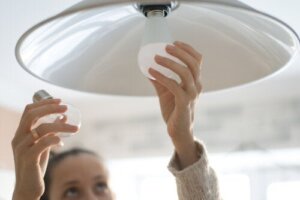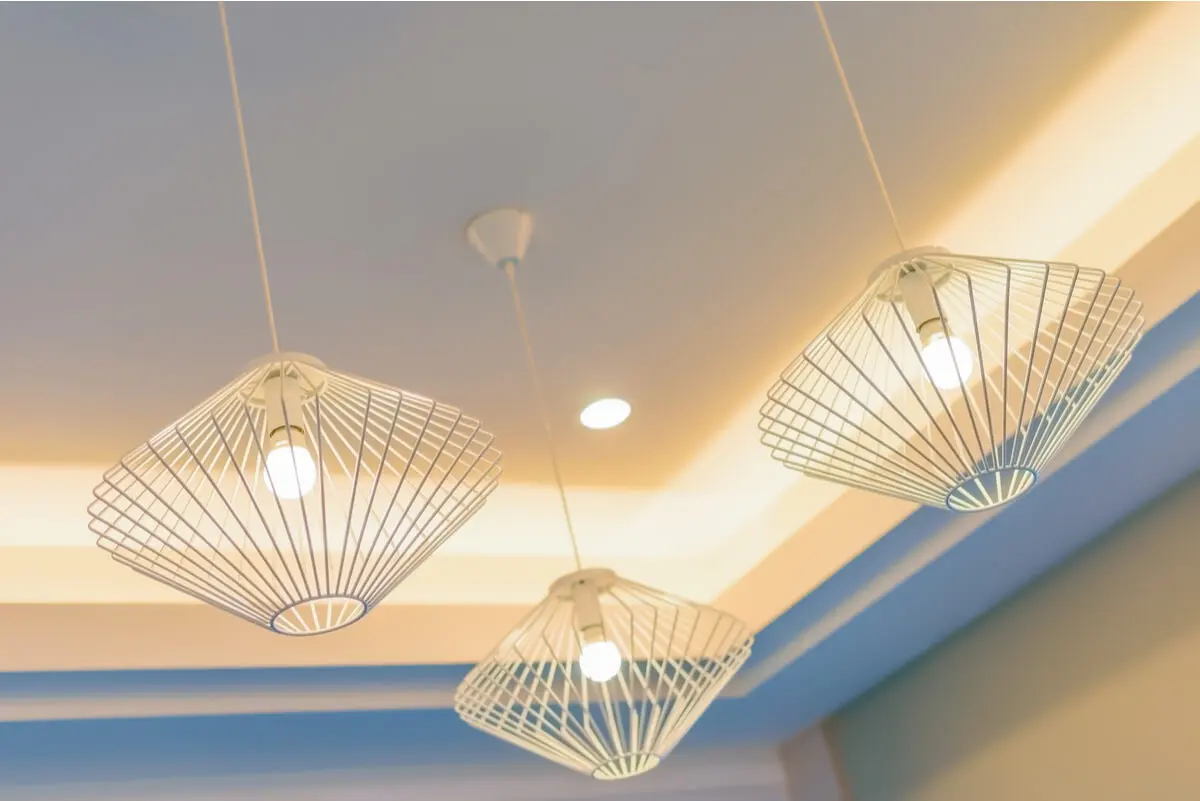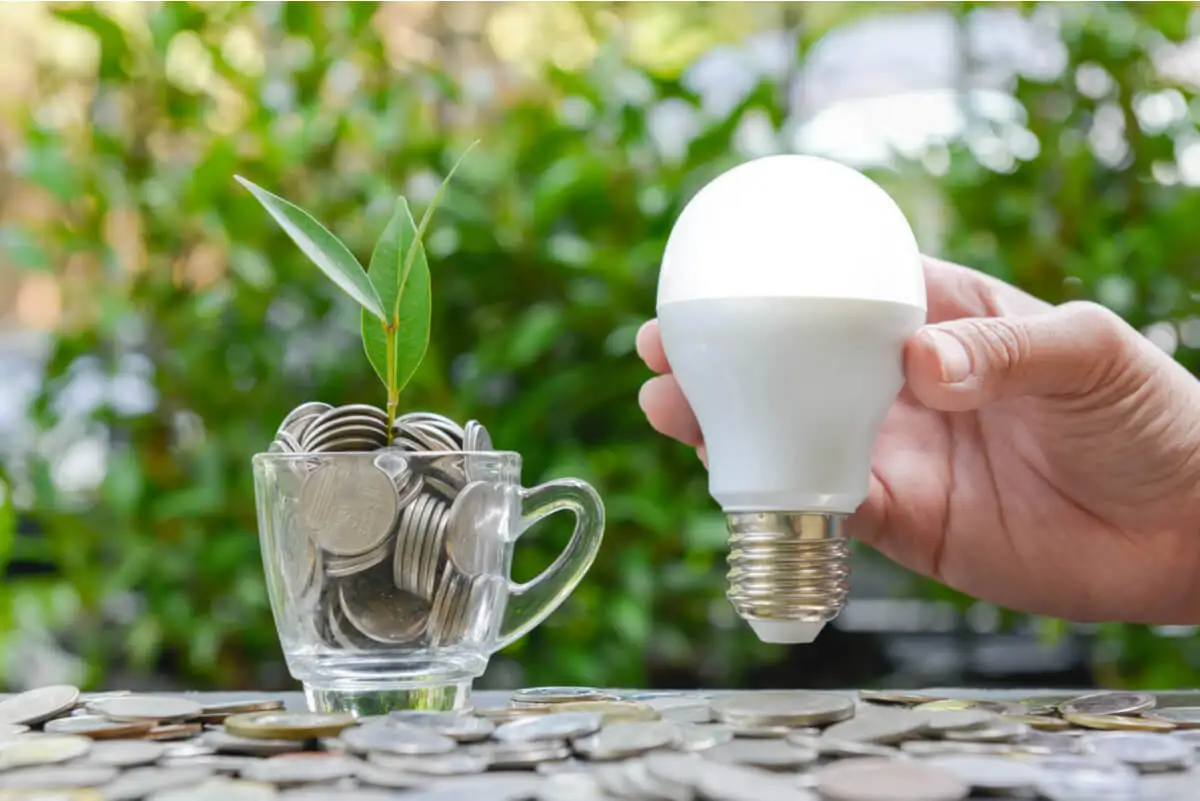Learn About the Advantages of Using LED Bulbs

There are multiple advantages of using LED bulbs (light-emitting diodes) in areas that need to be illuminated in a non-natural way. Although they began to be used for signage, their use has spread and today they’re a favorite in most homes. This is because they have a positive impact on the environment and on our pockets!
Light-emitting diodes have evolved in recent years and have a higher performance. On the other hand, they stand out for their versatility, and we can find bulbs of different sizes, shapes, and colors on the market.
What are the differences between LED bulbs and traditional bulbs?
One of the main differences between LED bulbs and traditional bulbs is efficiency. The former are very efficient without the need to consume extra energy, as is the case with halogen bulbs.
An LED diode converts between 80% and 90% of the energy it consumes into light, while a traditional one converts between 10% and 15%. The rest of the energy they consume is converted into heat.
On the other hand, LEDs turn on and off immediately because there’s no heating process prior to the action. This occurs without affecting the quality of the light emitted by the diode at any time. They also reduce pollution by emitting less carbon dioxide than halogen bulbs.

Advantages of using LED bulbs
Although changing all the bulbs in the home, office, or commercial business may create a considerable expense at first, we’ll tell you all about the advantages of using LED bulbs. In this way you’ll understand that, rather than being an extra expense, you’ll be making an investment in the medium and long term that will save you money.
Efficient lighting and energy savings
As detailed above, one of the biggest advantages of using LED bulbs is the efficiency with which they transform electrical energy into lighting. By optimizing the energy it takes without overheating in its process, a remarkable energy saving of up to 80% or more is obtained.
On the other hand, these bulbs distribute the light to the areas that are most needed. You’ll notice that their range of illumination is much wider and covers larger spaces than their predecessors.
Efficiency is also measured by the lumens per watt offered by their presentations. We find some with higher efficiency, with 150 lumens, and the common ones with 80. That is, about eight times more lighting capacity than a tungsten filament bulb.
Longer life
An LED bulb has a lifespan of up to 50,000 hours, while a traditional one only has about 2,000 hours. These 50,000 hours are equivalent to an approximate life of 17 years with a daily use of 8 hours.
Here we find another advantage, which is that LEDs don’t fuse from one moment to the next, leaving us in darkness. These bulbs begin to gradually reduce their luminous capacity, giving us time to replace them without any major problems. We know that this doesn’t happen with traditional bulbs.
To be certain of how long the bulb’s useful life might be, it’s necessary to identify these nomenclatures on the product: L70B50 or L70B10. The first one indicates that 50% of the lamp will have a luminous flux of 70% during its 50,000 hours of life. The second indicates that this flux will be 70% in 90% of the lamps.
You may be interested in: Is it Possible to Be Allergic to Electricity?
It doesn’t emit UV radiation
Contrary to traditional luminaires, LEDs don’t emit ultraviolet radiation (UV) or infrared rays. We know that these are harmful to health, affecting the skin and eyes. Although the exact effects on health of the radiation emitted by common light bulbs are still being studied, it’s obviously beneficial that LED lamps don’t emit it.
However, studies are underway to determine whether the blue light emitted by LED bulbs could affect the circadian cycle. The influence of these modern bulbs on this has yet to be defined.
Safety
As we mentioned before, LED bulbs don’t overheat; they don’t need this process to light up or stay lighted. Because of this, there are no incidents due to their bursting, something common in traditional luminaires.
The latter do require heating to turn on and, by needing a large amount of electricity to keep warm, they can explode if there’s an overload.
Variety and versatility
We can find these bulbs in all types, sizes, and colors, and for different areas and applications. This is a great advantage because we can decorate the home, office, or business as we want while saving energy at the same time.
They come in all types and can be used indoors and outdoors. In addition, they’re safe because, depending on the use, they will be protected from external environmental conditions that could damage or affect them.
Practicality in installation
Being so versatile, some of the formats come with implements that simplify installation. Although, of course, it’s always better to seek advice from a specialist to prevent accidents. Among these easy-to-install formats are LED strips.
Another practical factor is the control of the intensity of the light emitted, as some are designed to do so remotely, i.e. with a remote control.
They’re affordable
Although it all depends on the specific product, with the growth in the market for these lamps, it’s possible to find affordable prices. Of course, they’ll be a little more expensive than traditional ones, but the real savings are in their long life and the reduction in energy costs.

You can also read: 8 Ideas for a Sustainable Bathroom
Environmentally friendly
To close this section on the advantages of using LED bulbs, we can’t fail to mention how environmentally friendly they are. As we mentioned, these lights have a longer useful life, thus reducing the number of bulbs that need to be discarded, often inappropriately.
In addition, their low carbon dioxide emissions are beneficial for people and the environment, by reducing the greenhouse effect that affects the planet so much.
In their manufacture, no hazardous substances, such as mercury, tungsten, bromine, chlorine or tungsten are used. We do find these toxic substances in traditional bulbs. When their useful life is over, make sure you look for a place where you can dispose of them properly.
Do you want to start using LED bulbs?
As you can see, the use of LED bulbs impacts our health, our finances, and helps us to be more environmentally friendly. So, if you haven’t started using these types of lights, now is surely the time to do so.
If you decide to go for it, analyze the product you need to buy very carefully, get advice and check that you’re acquiring the types of LED bulbs that suit your needs.
All cited sources were thoroughly reviewed by our team to ensure their quality, reliability, currency, and validity. The bibliography of this article was considered reliable and of academic or scientific accuracy.
- Manuel Fco. Ortuño Sánchez, Sergi Gallego Rico, Andrés Márquez Ruiz, Augusto Beléndez Vázquez e Inmaculada Pascual Villalobos. Iluminando con LEDs. Universidad de Alicante. (2016). Disponible en: https://rua.ua.es/dspace/bitstream/10045/54275/1/RSEF_v30_n1_pp7-10_2016.pdf
- Hermoso Orzáez M. El cambio tecnológico a Led en los proyectos de alumbrado público. Análisis DAFO: Ventajes e inconvenientes. 20th International Congress on Project Management and Engineering
Cartagena, 13-15th July 2016. Disponible en: http://dspace.aeipro.com/xmlui/handle/123456789/885 - Reyes-Rojas, W., & Meza-Benavides, C. (2014). Discusión y evaluación de fuentes de luz artificial para la caracterización de dispositivos fotovoltaicos. Revista Tecnología En Marcha, 27, pág. 31-40. https://doi.org/10.18845/tm.v27i0.2147
- Maribel González-Púmariega, Marioly Vernhes Tamayo, Ángel Sánchez-Lamar. La radiación ultravioleta. Su efecto dañino y consecuencias para la salud. Theoria, Vol. 18 (2): 69-80, 2009. ISSN 0717-196X. Disponible en: https://www.ubiobio.cl/miweb/webfile/media/194/v/v18-2/06.pdf
- Posibles riesgos de la iluminación LED. Conclusiones del Grupo de trabajo Comité Español de Iluminación. ISBN: 978-84-946991-7-7. Disponible en: https://www.ceisp.com/fileadmin/user_upload/Riesgos-iluminacion-led.pdf
This text is provided for informational purposes only and does not replace consultation with a professional. If in doubt, consult your specialist.








